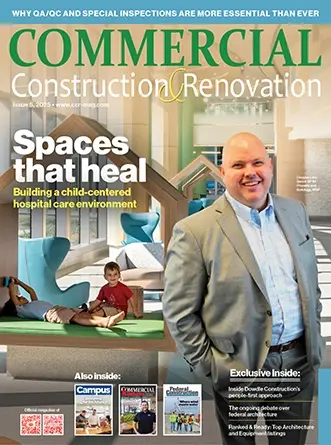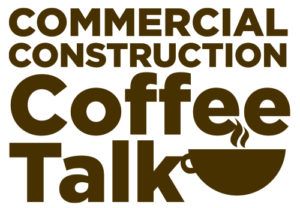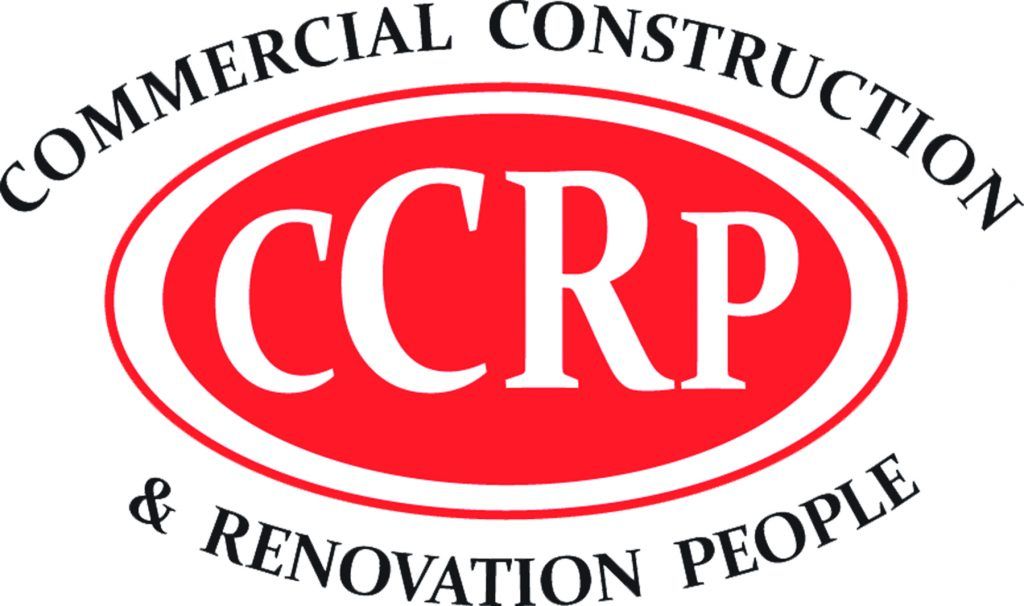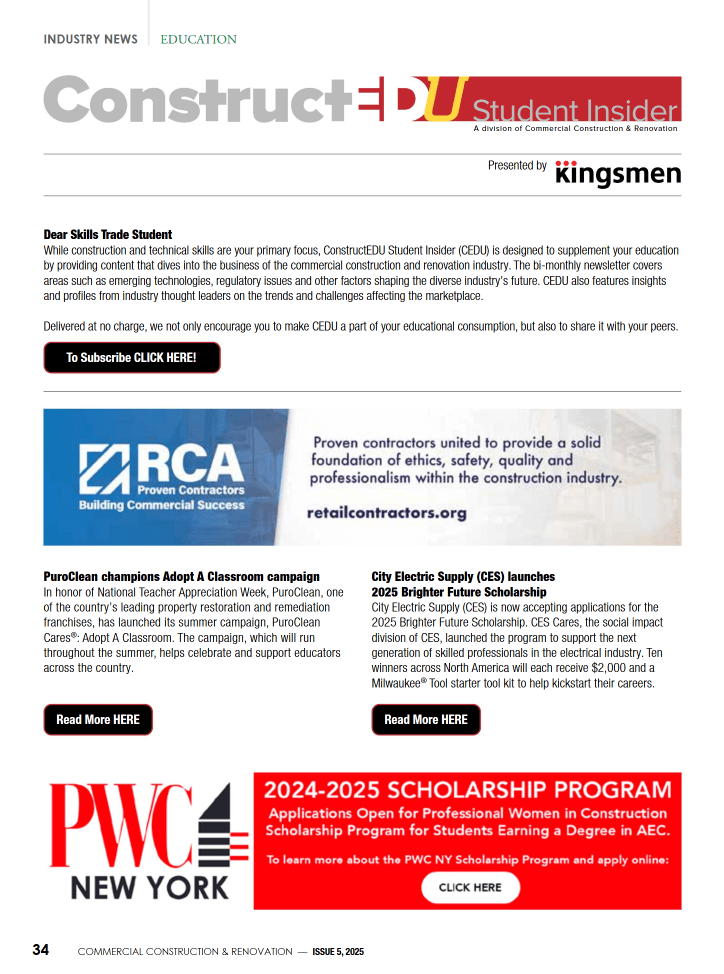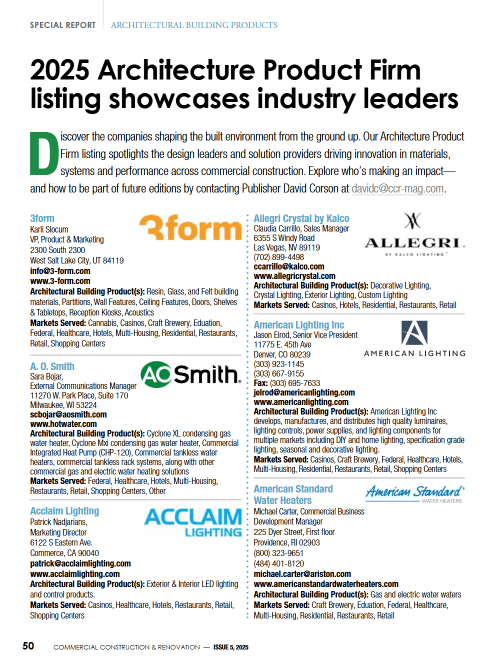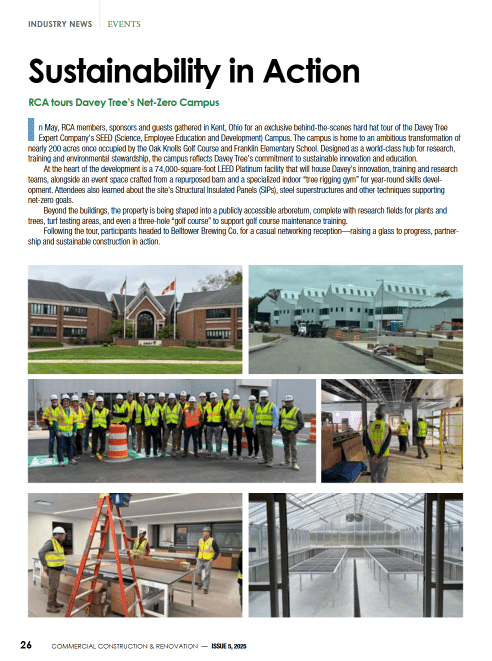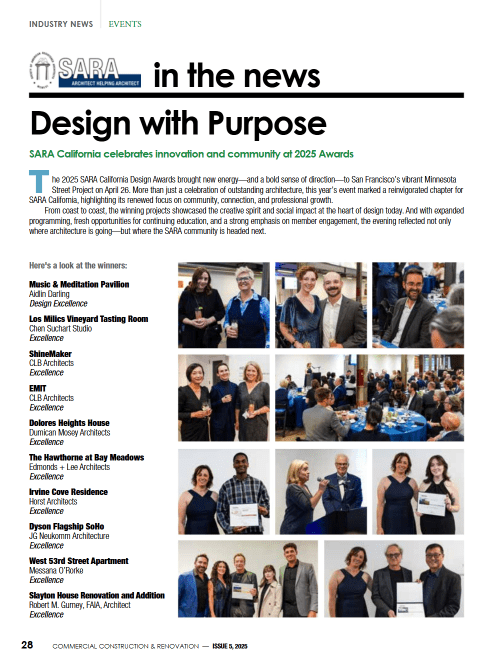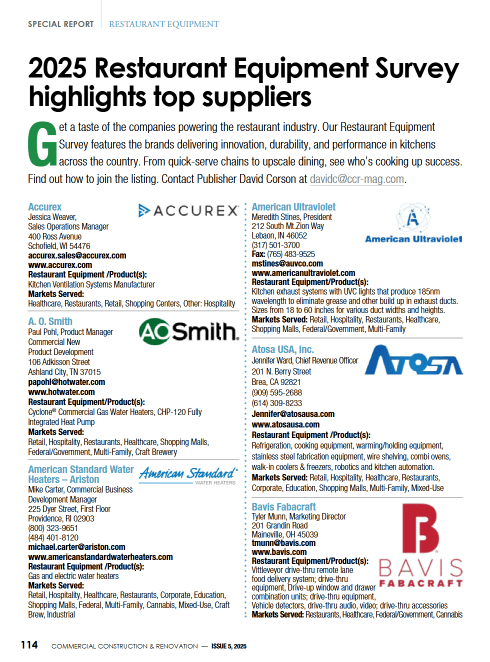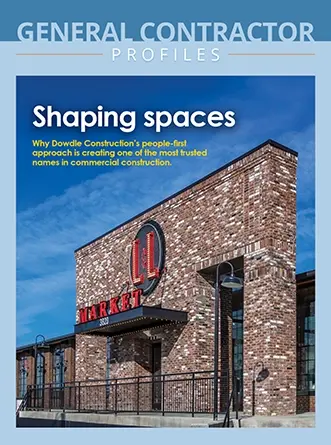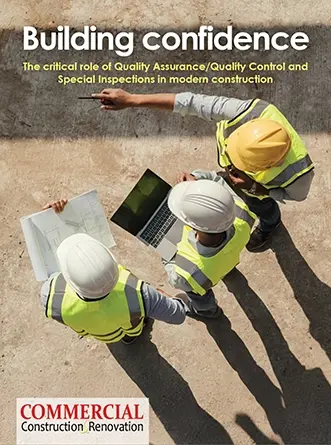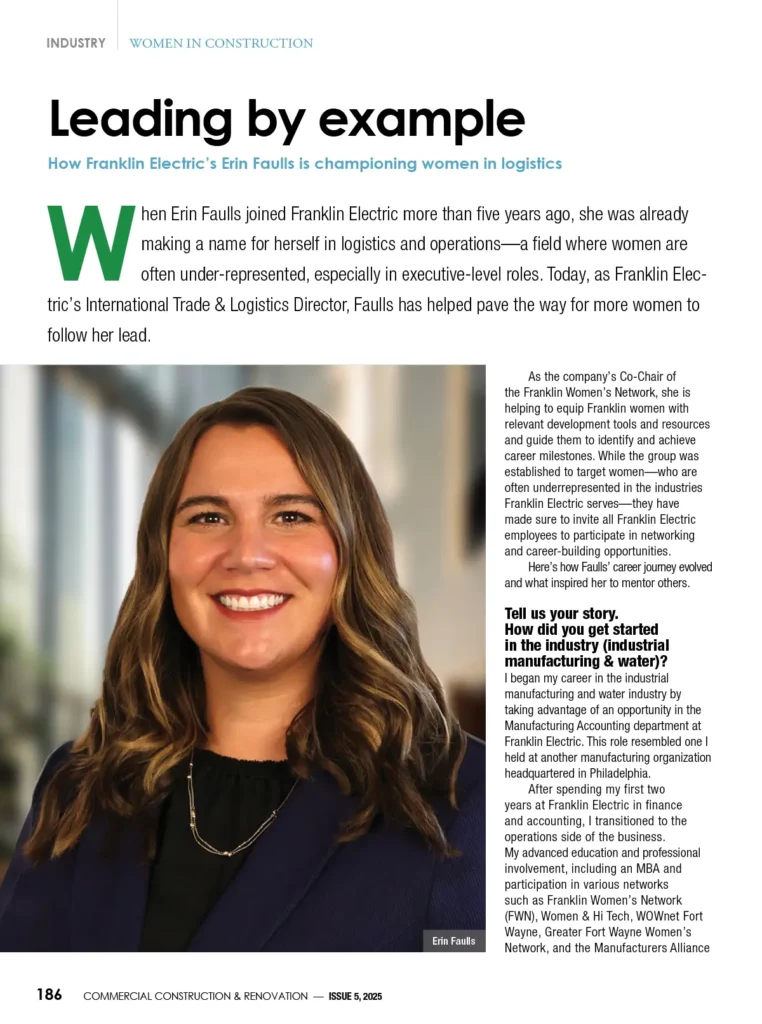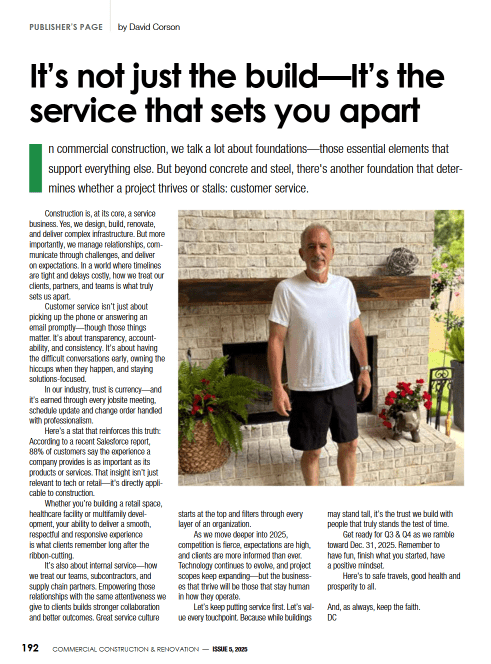Thirty nine states lost construction jobs between August 2019 and August 2020 while 31 states and the District of Columbia added construction jobs between July and August according to a new analysis of Labor Department data released by the Associated General Contractors of America. The new annual figures detail how the coronavirus pandemic has undermined demand for construction projects after a strong start to the year.
California lost the most construction jobs (-52,000, -5.8 percent) between August 2019 and August 2020, followed by New York (-46,000, -11.3 percent); Texas (-39,300 jobs, -5.0 percent); Massachusetts (-20,200 jobs, -12.4 percent) and Illinois (-17,200 jobs, -7.5 percent). Vermont lost the highest percent of construction jobs for the year (-29.6 percent, -4,500 jobs), followed by Massachusetts; Iowa (-11.8 percent, -9,300 jobs); Louisiana (-11.4 percent, -15,700 jobs) and New York.
Ten states and the District of Columbia added construction jobs between August 2019 and August 2020 while construction employment was unchanged in Montana. Utah added the most new construction jobs (8,800 jobs, 8.0 percent), followed by Virginia (4,400 jobs, 2.2 percent); Maryland (3,800 jobs, 2.3 percent); Indiana (3,100 jobs, 2.1 percent) and Missouri (2,700 jobs, 2.1 percent). South Dakota added the highest percent (10.9 percent, 2,600 jobs), followed by Utah; Idaho (2.4 percent, 1,300 jobs); Maryland and Virginia.
California added the most new construction jobs (6,700 jobs, 0.8 percent) between July and August, followed by New York (5,200 jobs, 1.5 percent); Pennsylvania (4,100 jobs, 1.7 percent); Texas (3,300 jobs, 0.4 percent) and Oregon (3,200 jobs, 3.1 percent). New Mexico added the highest percentage (6.7 percent, 3,100) of jobs for the month, followed by Mississippi (3.4 percent, 1,400 jobs); Oregon and Kentucky (2.0 percent, 1,600 jobs).
Nineteen states lost construction jobs for the month with Nevada losing the most (-2,600 jobs, -2.8 percent). Other states losing a high number of construction jobs for the month include Florida (-2,200 jobs, -0.4 percent); Nebraska (-1,800 jobs, -3.3 percent) and North Carolina (-1,800 jobs, -0.8 percent). Hawaii lost the highest percentage (-3.5 percent, -1,300 jobs) of construction jobs for the month, followed by West Virginia (-3.3 percent, -1,100 jobs); Nebraska and Nevada.
Association officials said the best thing Washington leaders can do to boost demand for construction and employment in the sector is to increase investments in infrastructure and provide liability protections for firms taking steps to protect workers from the coronavirus. They added that extending the current surface transportation bill for one-year – which appears likely to occur – will provide needed short-term certainty for the transportation construction market.
Contractors work through backlogs, express optimism about future
The commercial construction industry showed signs of rebound in the latest U.S. Chamber of Commerce Commercial Construction Index (Index). While the overall index score remained fairly steady, increasing by one point to 57 in the third quarter, two of the three main indicators saw increases, pointing to more optimism about the future. Despite the overall gain, the index remains significantly below the score of 74 from the first quarter of 2020.
Confidence in New Business and Revenue Rises
Confidence in new business rose six points to 56 in Q3 from 50 in Q2, while revenue expectations increased four points to 48 in Q3 from 44 in Q2. However, those increases were offset by the third indicator, current backlog, which dropped five points from 73 in Q2 to 68 in Q3 (impact to backlog may lag for several months as projects are delayed).
As commercial construction contractors look to the future, 82% now have moderate to high confidence that the U.S. market will provide sufficient new business opportunities in the next 12 months, up from 75% in Q2. The majority (60%) of contractors expect their revenues to remain about the same in the next 12 months (the same as in Q2); 22% expect an increase, up from 17% in Q2.
Job Growth on the Horizon, but Finding Skilled Workers Remains a Challenge
Most contractors (57%) expect to keep the same number of workers in the next six months, up from 48% in Q2; and one in three (32%) plan to hire (the same as in Q2). Just 7% expect to reduce staffing, down from 15% last quarter. At the same time, most contractors (83%) report moderate to high levels of difficulty in finding skilled workers. More than one in three (36%) contractors who report difficulty also report turning down work because of it, up from 32% last quarter.
COVID Impact
The impact of coronavirus still looms large, but its perceived impact is lessening over time. Nearly all contractors (85%) are still experiencing delays due to the coronavirus outbreak, with 83% expecting delays to continue into the fall and 71% expecting delays will remain through early 2021. However, the average amount of delays has decreased sharply as the year continues. In July, contractors reported an average share of 26% of their projects were delayed, down from 40% in April.
Additional findings include:
Worker health and safety remains top concern. Most (70%) contractors say worker health and safety is a top concern for their business. A majority (60%) report more project shutdowns/delays as another top concern.
Contractors are taking action to ensure employees are safe. Nearly all contractors (97%) report making changes in response to COVID-19 this quarter, including providing items like masks and sanitizer (82%); changing work procedures to increase social distancing (75%); and allowing remote work for office employees (67%).
Concern over fluctuating costs for materials remains relatively high. Most (62%) contractors indicated that cost fluctuations have a high or moderate impact on their business, up from 59% in Q2.
Lumber is highest reported shortage. Over half (54%) of contractors report facing shortages for at least one material, up from 45% in Q2. Wood and/or lumber is the most reported shortage at 11%, up from 5% last quarter.
The Index comprises three leading indicators to gauge confidence in the commercial construction industry, generating a composite Index on the scale of 0 to 100 that serves as an indicator of health of the contractor segment on a quarterly basis.
The Q3 2020 results from the three key drivers were:
- Backlog: The backlog indicator dropped five points to 68 (from 73 in Q2).
- New Business Confidence: The overall level of contractor confidence increased to 56 (up six points from Q2).
- Revenue: Contractors’ revenue expectations over the next 12 months increased to 48 (up 4 points from Q2).
The research was developed with Dodge Data & Analytics (DD&A), the leading provider of insights and data for the construction industry, by surveying commercial and institutional contractors.
The U.S. Chamber of Commerce Commercial Construction Index is a quarterly economic index designed to gauge the outlook for, and resulting confidence in, the commercial construction industry. The U.S. Chamber produces this Index, along with Dodge Data & Analytics (DD&A). Each quarter, researchers from DD&A source responses from their Contractor Panel of more than 2,700 commercial construction decision-makers in order to better understand their levels of confidence in the industry and other key trends. This panel allows DD&A to provide findings that are representative of the entire U.S. construction industry by geography, size, and type of company. Click here to see the full report, methodology, and graphics.
For a copy of the report, visit www.CommercialConstructionIndex.com.

